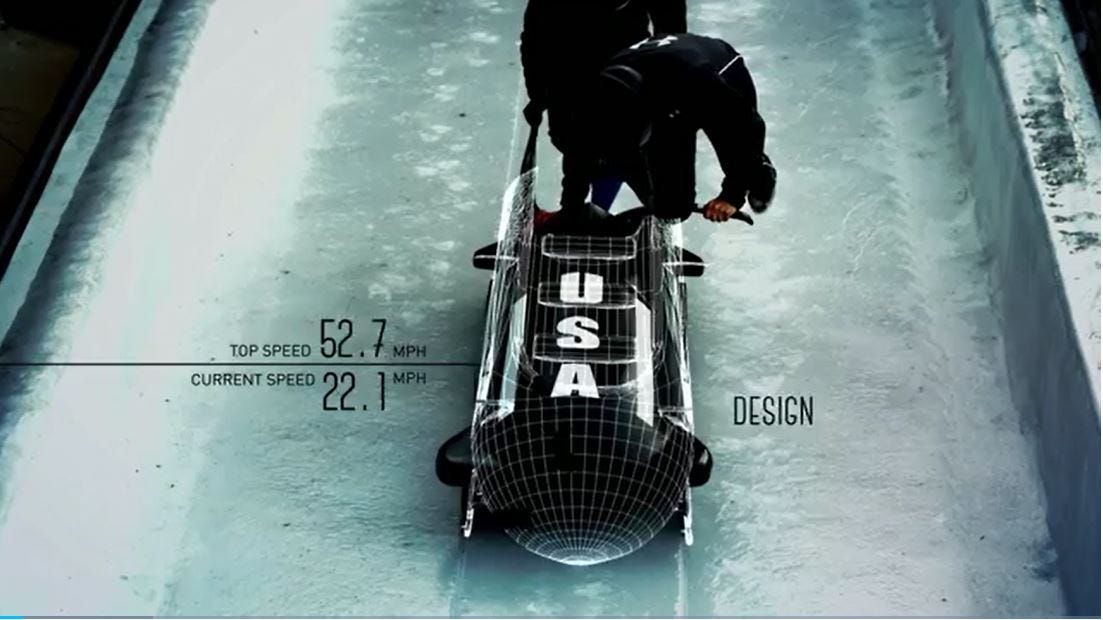The Science of the Winter Olympics
The Science of the Winter Olympics

Go behind the scenes at the 2018 Winter Olympics in PyeongChang County, South Korea to learn about the science behind Olympians’ winning moves.
What makes American snowboarder Shaun White’s board dip down halfpipes? How does Russian figure skater Evgenia Medvedeva land an axel jump and Kaillie Humphries pilot her bobsled team toward the finish line? The following videos demonstrate how gravity, physics, engineering, chemistry and mathematics are involved in every move of an Olympic athlete’s routine.
Physics of Slope-style Skiing
Jordan Gerton, an associate professor of physics at the University of Utah, filmed Nick Goepper, a 2013 world champion slopestyle skier, to demonstrate how the laws of physics affect this Olympian’s jumps, grinds and lands.
Slopestyle skiers start their run with potential energy — energy that is stored due to its position. As Goepper moves down the hill, his potential energy is converted into kinetic energy, the energy of movement. Before reaching a jump, Goepper bends his knees to add additional potential energy to launch into the air. To perform tricks, Goepper uses angular momentum at takeoff, and, once in the air, controls the rotation speed by using his arms to increase and decrease his moment of inertia. Figure skaters and aerial skiers also rely on rotation speed to impress judges.
Ultimately, physics and incredible skill team up to land athletes on the winning podium.
Engineering the Halfpipe
Athletes like American snowboarder Shaun White are the ones who make the impossible possible. In this video, NSF-funded mechanical engineer Brianno Coller, a professor at Northern Illinois University, explains how engineers designed the halfpipe so that snowboarders like White can get more air time to perform tricks.
Science of Ice
The science that makes ice slippery also makes the Olympic Winter Games possible. But exactly what is it that makes ice slippery? Ken Golden, a mathematician at the University of Utah, explains why the unique surface of ice enables the slide and glide of winter sports.
Engineering Faster and Safer Bobsleds

“Feel the rhythm! Feel the rhyme! Get on up, it’s bobsled time,” chanted actor Doug E. Doug in the Disney film “Cool Runnings” about a Jamaican bobsledding team that qualifies to compete in the Winter Olympics. A bobsled team from Jamaica or any other country, however, relies on more than rhythm and rhyme to finish a bobsled heat.
Bobsled is one of the fastest, most exciting and most dangerous sports in the Winter Olympics. Bobsled racers reach speeds close to 100 mph. What may seem like a chaotic joy ride is actually the product of meticulous research and design from engineers.
Watch Michael Scully, of BMW DesignWorks USA, and mechanical engineer Mont Hubbard, professor emeritus at the University of California, Davis, explain the engineering challenges associated with making sleds faster and tracks safer.
Figure Skating Physics
“There is no better example of physics than on an ice skating rink. It’s a wonderful place to see science,” says Brad Orr, head of the physics department at the University of Michigan. Orr explains that good balance or stability is basic to everything a skater does, and that begins with understanding the center of mass, the balance point in which an object’s mass is concentrated.
Key science and engineering concepts and cutting-edge technology play integral roles in each athlete’s respective sport and help to maximize their performance. Watch the “Science and Engineering of the 2014 Olympic Winter Games” video collection to learn more about the role physics, engineering, chemistry, design and mathematics have in the world’s foremost sporting events.